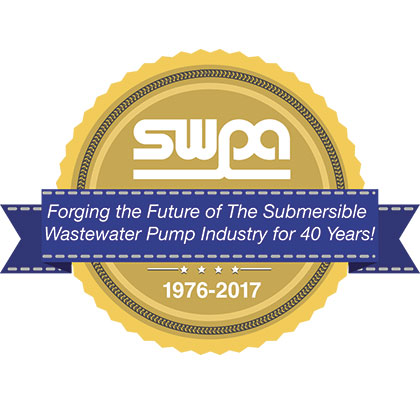The investment in a submersible pump is more than just the initial purchase and installation costs. Extending a pump’s life with replacement parts can often be a boon for both system performance and the bottom line—if they are the right parts. For many pump users, the quality and performance of aftermarket parts are key considerations in the “repair or replace” decision. North America Pre-Engineered Systems Market Manager for Flygt and SWPA member Randall Bard joins SWPA Executive Director Adam Stolberg in a conversation to best guide submersible pump users in their decision making.
Even when operators carry out routine maintenance schedules, an unexpected breakdown can necessitate a search for aftermarket components. How can pump users best assess different suppliers?
Pump manufacturers recommend that customers use replacement parts from the original equipment manufacturer to ensure optimal performance. Maintaining OEM warranty is another key factor that should be considered when servicing equipment. Parts are specifically developed or selected to work in the OEM’s products. It can be difficult and confusing when evaluating aftermarket parts and whether they are exact or have subtle changes from the manufacturers OEM part.
1. The supplier should have OEM branded parts, and have the ability to test the equipment after repair to ensure the pump is restored to optimal performance.
2. The supplier should have a knowledgeable staff that can explain the function of the party and provide installation assistance of the part if needed.
3. Stock is very critical in emergency situations, so selecting the supplier that has a relationship with the OEM is important. These companies have a vested interest in the quality of the repair and its success. This also ensures they will be knowledgeable on the repair process and in cases where the part needs to be ordered may be able to offer short term temporary solutions.
Many OEM manufacturers have dedicated aftermarket teams to help pump users select the parts they need. What questions should pump users bring with them and what answers should they look for?
All equipment requires repair at some point in time. Whether dealing with an unexpected breakdown or replacing wear parts at a scheduled maintenance interval, OEM pump manufacturers and their industry partners often provide services from minor repair to full overhaul. Depending on the nature of repair, both onsite and workshop repair may be required. The key to any repair is knowledge and having the right tools for the job, and pump repairs are no different. Some of the key questions and support request for the manufactures aftermarket team are listed below.
1. Workshop manuals and service training are the most important to being self-sufficient with any piece of machinery. Manufacturers typically offer service schools and the support documentation to conduct repairs. Even if you choose to outsource maintenance and repairs it can be valuable to know what the repair entails and the time required for completing the repair.
2. Ask yourself how to locate the nearest service partner that offers replacement parts.
3. Manufacturers often offer repair kits that include parts that are replaced together or at the same maintenance interval. These kits can reduce parts cost and simplify having the right parts on the shelf or service truck.
Aftermarket parts are just one factor in the “repair or replace” decision for pump users. How does the tipping point in this decision change based on the application?
There are a number of factors that influence “repair or replace” when equipment goes down. The obvious factors are cost to repair versus the cost of complete replacement. If there are significant costs associated with retrofit or new install, this may force a repair even though the pump is near the end of its useful life. In a process application, the cost of not producing product can outweigh any repair or replacement cost. If the station is overflow only and can be down for a period of time the ability to consider repair is more feasible. Another scenario may be that the process can be down for a few days without disruption to the manufacturing process allowing time for the equipment to be repaired. The typical rule of thumb is that if the repair cost exceeds 60 percent of the cost of a new unit it is worth considering replacement.
How can education programs like those offered by SWPA lead to better decisions when assessing aftermarket components for submersibles?
The education programs offered by SWPA allow end-users to directly interact with industry experts. The SWPA members range from equipment manufacturers to suppliers that have years of experience with not only submersible pumps, but all the systems ancillary equipment. The educational programs provide a comprehensive learning experience on a wide range of pumping system equipment. Also discussed are best practices for a variety of applications, and updates on new technologies emerging in the industry. ◆
____________________________________________
MODERN PUMPING TODAY, April 2017
Did you enjoy this article?
Subscribe to the FREE Digital Edition of Modern Pumping Today Magazine!
![]()


